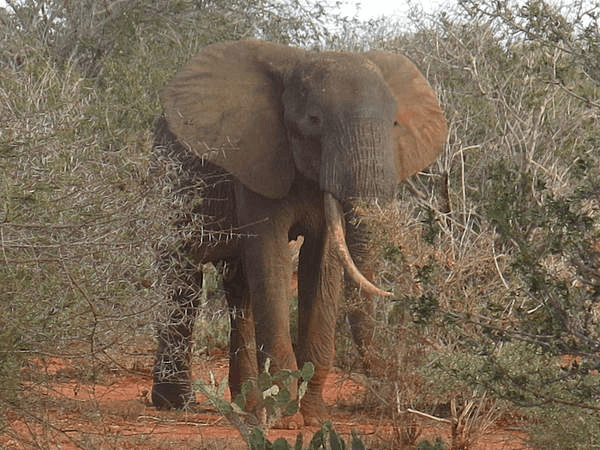Additionally, a discharging wound on the mid-left abdomen side, likely from an arrow, added to the distressing evidence of the dangers elephants confront in the wild.

The injuries, estimated to be between four to seven days old for the leg and over three weeks for the abdominal wound, showcased the remarkable resilience of the injured elephant.
Despite the pain and trauma, the majestic creature remained composed as the vet unit prepared the tranquilizing dart.
A thorough examination confirmed the initial observations, focusing on the abdominal wound.

The vet team meticulously cleaned the wounds with Hydrogen Peroxide and Iodine, applying wet green clay to facilitate healing.
The injured elephant received systemic broad-spectrum antibiotics, anti-inflammatory medication, and Vitamin B-Complex to stimulate metabolism.
A careful flip, facilitated by a strap between the front and hind legs anchored to a vehicle, enabled the vet team to retrieve the lodged arrowhead through hand and forceps manipulation.

Despite concerns about the arrowhead possibly being laced with poison, the resilient elephant rose energetically and ran away from a distance, seemingly undeterred by the ordeal.
However, lingering worries persisted about the possibility of poison in the arrowhead, highlighting the ongoing threat of poaching.
With two injuries sustained within a month, the elephant appeared to be a targeted victim.

The vet unit stressed the urgent need for increased surveillance to shield this majestic creature from further harm.
The relentless efforts of the Amboseli Mobile Vet Unit serve as a poignant reminder of the ongoing struggle to protect wildlife from the harsh impacts of poaching and human-wildlife conflict.

